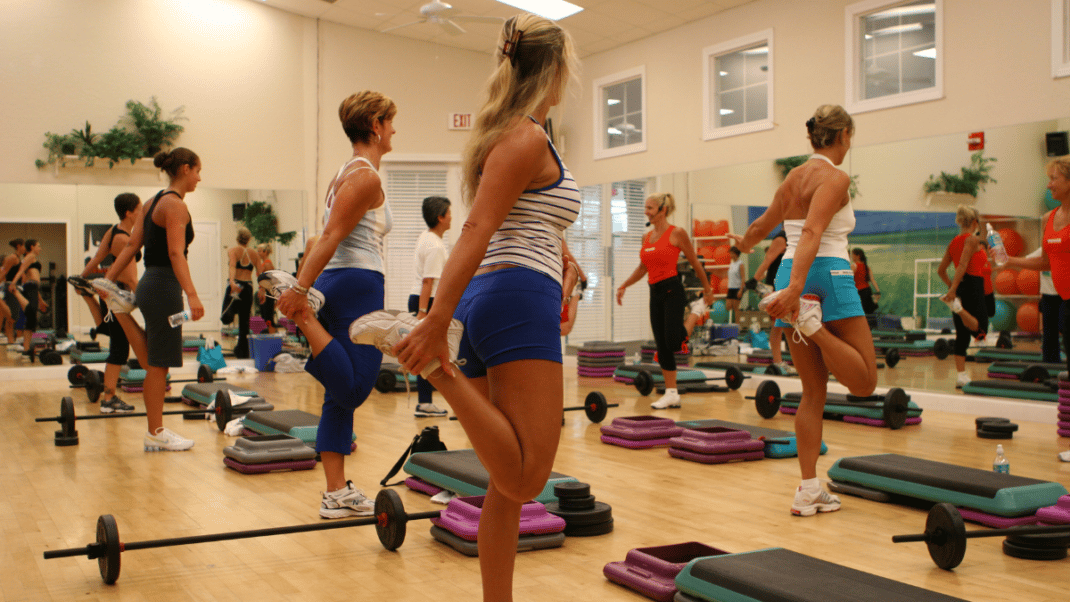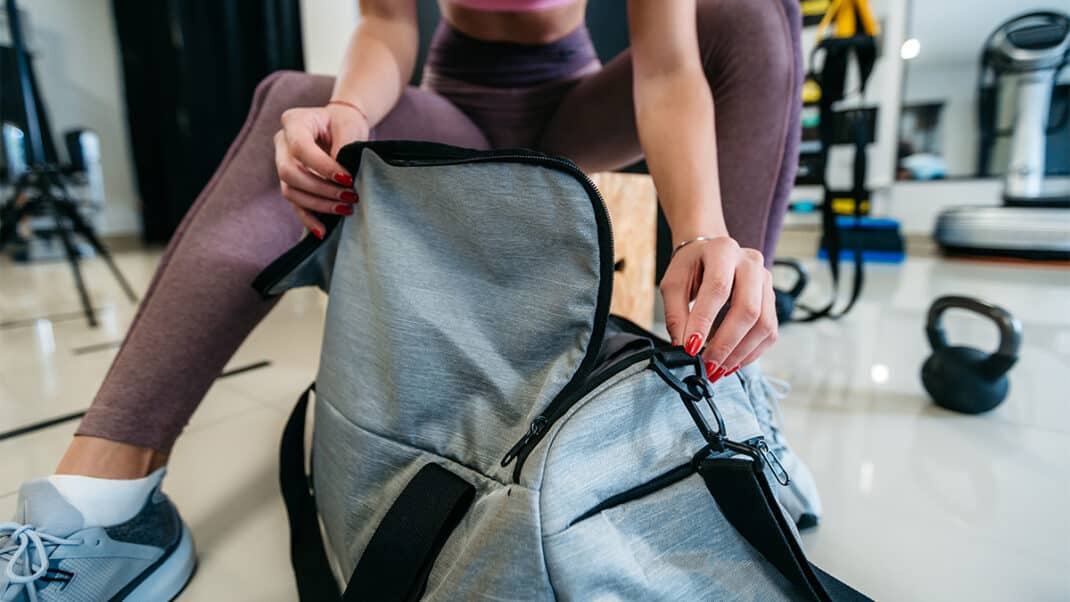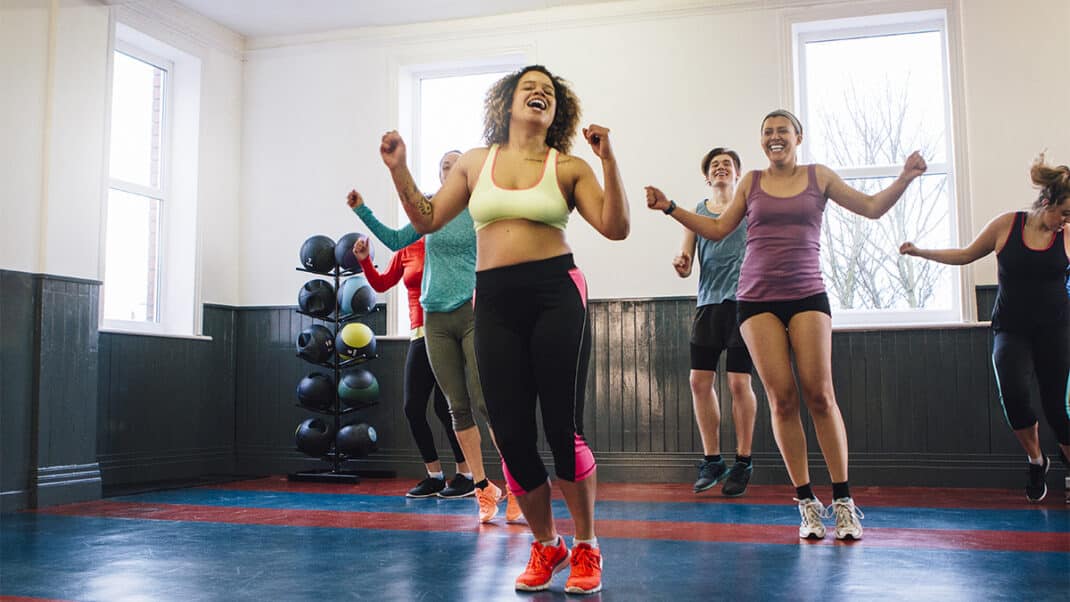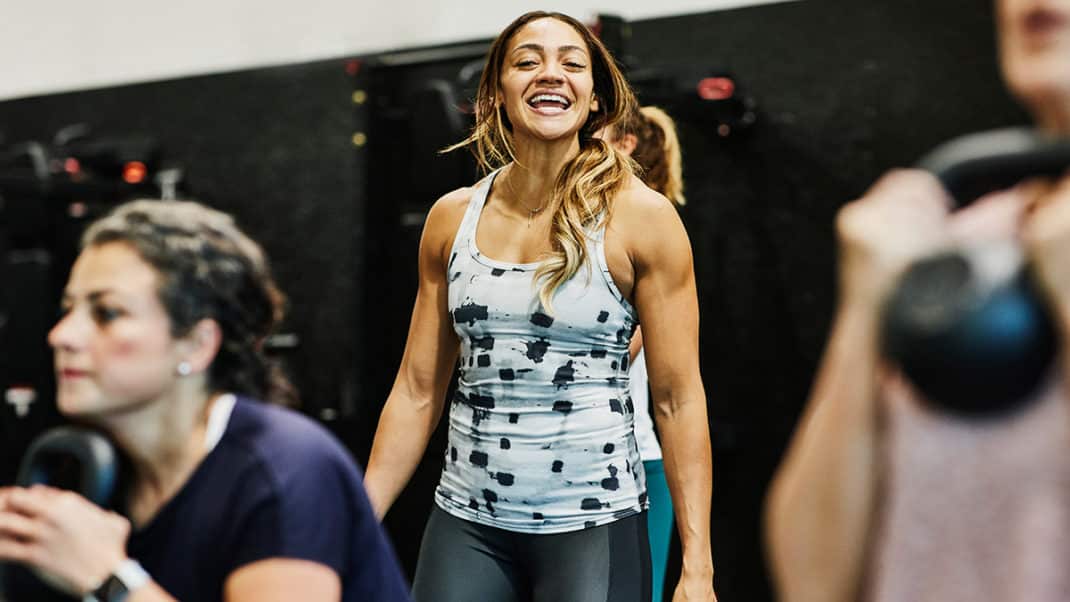How to Take Care of Your Voice
Take your practice to the next level with vocal training.
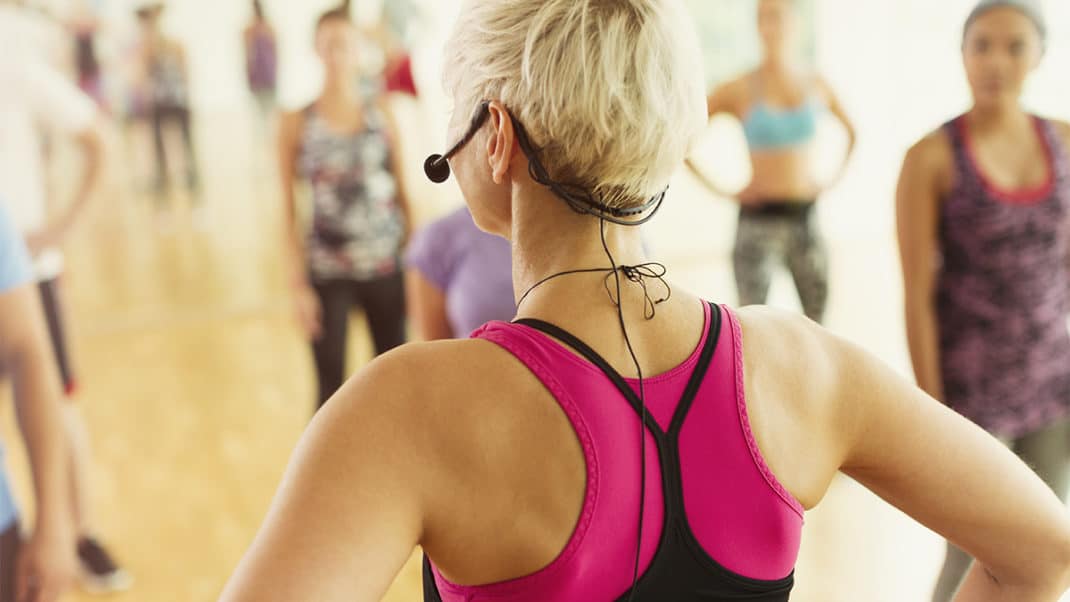
As trained fitness professionals, we take steps to protect our bodies from injury by warming up, cooling down, using proper technique, paying attention to our bodies, making time for recovery and, when we do get injured, seeking treatment from medical professionals. Our voices need this kind of care, too. They’re a powerful tool and one of the “instruments” we rely on when teaching group fitness classes or speaking to large groups on wellness topics. However, it’s rare for fit pros to be educated abouthowto harness and take care of our voice the way a performer does, for a more entertraining group fitness experience.
Think about it: Did you get any on-the-job tips, aside from “here’s how to use a mic”? Did anyone explain how to properly care for your voice—and how to safely “project” it to engage a crowdwithouta mic? It’s time we challenged these norms. Because the incidence of vocal problems among fitness instructors is disproportionately high. And if we want to continue to inspire communities, gain uninterrupted income, and turn up our “it” factor, we must start with what enters the room first: our voice.
The Prevalence of Vocal Problems in Fit Pros
Across several studies, between 55%–79% of group fitness instructors self-reported symptoms or diagnoses of vocal problems (Davis 2020; Fontan et al. 2017; Rumbach 2013), as compared with 30% of the general population (Roy et al. 2005). This is a significant discrepancy—one that group fitness instructors and managers need to address to increase the consistency and longevity of the profession.
In one study, 58% of surveyed group fitness instructors reported partial voice loss and hoarseness during class, and 47% reported partial voice loss and hoarseness directly after class (Rumbach 2013). In another study, 70% of group fitness instructors surveyed reported having vocal hoarseness at some point related to their job (Davis 2020).
这些都是高得惊人的比例,如hoarseness and loss of voice are symptoms of vocal fatigue and injury. If left unchecked, the damage can progress to the point where treatment necessitates delicate vocal surgery, which comes with a lengthy recovery during which one cannot teach classes. In addition, this may not be entirely covered by health insurance.
研究也告诉我们,80% - -98%的健身专业fessionals agree that voice education is an important component of instructor training; however, 70%–80% reported never having any voice education at all (Davis 2020; Fontan et al. 2017; Rumbach 2013). This needs to shift because the voice is one of our most powerful tools.
See also:The Case Against Allowing Injured Instructors to Teach
Anatomy of a Strong Voice
A strong voice engages, educates and inspires the masses, both on and offline. Many believe this is innate—you either have one or you don’t. While some instructors are indeed blessed with natural abilities to project to a crowd, there are ways to develop a stronger voice. The first step is better understanding the vocal anatomy.
You’ve likely heard of a voice box and vocal cords, but the reality of vocal function is far more complex. The larynx, orvoice box,houses the vocal folds, more commonly known as vocal cords, which sit on top of the airway, open when we breathe and come together when we speak.
To generate a strong, healthy voice, the vocal folds need to vibrate efficiently in their closed position. Physical changes to the vocal folds, like swelling, scarring, stiffness, lesions, or excess tension from overuse and injury, will disrupt the vocal folds’ closure and vibration. This disruption can cause hoarseness, discomfort, loss of vocal range and volume, and even loss of the voice: all elements that lose us money and threaten our livelihood now and in coming years. See “Don’t Push Through Vocal Strain,” below, for more.
See also:Group Fitness Instructor Tips
How To Take Care of Your Voice and Practice Vocal Hygiene

Prevention is key, so how can you protect your voice and prevent vocal injury and fatigue? Here are four manageable solutions for voice preservation.
1. Hydrate
Be sure you’re drinking enough water to hydrate your bodily systems, including your vocal folds. This seems like a simple tip, and it is! The vocal folds must be hydrated to be pliable enough to vibrate efficiently, which is how they make sound.
Pro tip: Be proactive.It takes about 3 hours for water to begin hydrating the body, so get ahead of your hydration by drinking water throughout the day. If you teach early morning classes, go to bed well-hydrated, and chase your pre-class coffee with a glass of water. Give your vocal folds a quick burst of hydration by steaming or nebulizing with a personal humidifier. Professional singers use these tools to keep their voices in top shape, and group fitness instructors can benefit from the extra hydration, too!
2. Warm Up and Cool Down
Prepare and take care of your voice before and after a workout, just as you do the rest of your
body. Gentle humming up and down scales, buzzing your lips, and humming your favorite tunes are easy ways to get your vocal folds ready.
Pro tip: Multitask!Aim for a 5- to 10-minute vocal warmup before you begin teaching and a 5-minute cooldown shortly after you finish. It can be tough to carve out time, so multitask! Try humming scales while setting up your space or as you’re warming up your physical body. Hum a favorite tune from your class playlist while packing your things. Remember, something is better than nothing, so even a few minutes will be beneficial.
3. Rest
Vocal rest is a critical part of a vocal hygiene regimen. Aim to rest your voice for 10–15 minutes for every hour of speaking. This is a challenge when you’re teaching several classes back to back, but even a few minutes of vocal rest can help!
Pro tip: Budget your daily voice usage.There are activities that require you to spend your “vocal cash,” like when you teach classes or private sessions with clients. There are also activities that don’t require you to spend your vocal cash but can drain your daily budget, such as talking in a noisy restaurant or engaging in a long phone call with a friend. These activities, while important, may be better saved for days when you aren’t teaching so you can preserve your vocal cash for professional use.
4. Amplify
A mic is the number-one tool facilities need to provide their instructor talent to avoid last-minute subbing, increase long-term voice health and avoid members being unnecessarily shouted at! Shouting or screaming forces the vocal folds to slam together and can cause vocal injury.
When we wear mics, we don’t have to shout, which is exactly what we mustavoidto maintain a long, vocally healthy career in fitness. A properly functioning mic makes it possible to simply speak clearly and be heard. If you do shout into a mic, your words may become distorted and difficult for members to understand.
Pro tip: Do a mic check.Check your mic prior to class to ensure music and mic levels are appropriate for your space. If you’re a group fitness manager, post an easy-to-find one-page checklist for the mic and sound system in each room.
Be Vocal About How to Take Care of Your Voice
Imagine what could happen if, instead of being reactive when something goes wrong, you were proactive and prevented it from happening to begin with. When you take preventative measures to protect your voice today, you safeguard your professional longevity. Remember: Your vocal health deserves as much of a seat at the table as preventative measures to protect your body.
Don’t Push Through Vocal Strain
Have you or other instructors on your team ever had to find a sub due to a lost voice? When this occurs, it often takes days for the voice to return to a functional level. This sends group fitness managers scrambling to find coverage and results in lost income. Because we need to make money and don’t want to disappoint people, we may try to push through vocal strain and fatigue and teach anyway; however, the consequences can be dire! Continuing to teach classes (and even to speak as normal outside of class) when experiencing vocal strain and fatigue can lead to vocal injuries, such as the development of nodules, polyps or hemorrhages. Recovery can be long and costly and could potentially require surgery followed by voice therapy. Otolaryngologists and speech-language pathologists can treat these injuries, but injury prevention is best for the voice, just as it is for the rest of the body.
Vocal Performance Insider Tips
Leading a group fitness class requires a certain amount of performance ability, which extends to your voice. Here are a couple of tips to help up your teaching game.
- Record yourself.Given that high-level digital classes are now a cornerstone of the group fitness industry, one simple self-assessment performance tool is to record yourself. If you haven’t listened to a recording of one of your classes in the past 3 months (or ever!), now is the time! We often don’t give ourselves enough credit for how far we’ve come in our careers. Compile recordings for your ears only, or to share with a trusted mentor. This is a great way to reflect, improve and celebrate progress.
- Play with speed.当演员的角色做准备,他们利用塞弗ral channels of their craft. One way they use their voice at key parts in the script, while immersed in character, is they map out how fast or slow their character will speak in a scene, depending on the plot. Think of how you can incorporate speaking fast or slow in your classes. When, in the flow of class, does it make the most sense to speak quickly (before or during a “push,” perhaps)? When would slowing down create the best environment (say, during a meditative period)? When teaching a class, you can’t play with volume as much (say, whispering to build suspense), or you risk losing people. Playing with speed offers you another option to set the mood with your voice.
References
Davis, S. 2020. A preliminary study on the need for structured vocal seminars for fitness instructors to prevent voice disorders and improve overall voice use during instruction.Perspectives of the ASHA Special Interest Groups, 5(2), 435–38. Fontan, L., et al. 2017. Vocal problems in sports and fitness instructors: A study of prevalence, risk factors, and need for prevention in France.Journal of Voice, 31(2) 261, e33–38. Roy, N., et al. 2005. Voice disorders in the general population: Prevalence, risk factors, and occupational impact.The Laryngoscope, 115(11), 1988–95. Rumbach, A.F. 2013. Vocal problems of group fitness instructors: Prevalence of self-reported sensory and auditory- perceptual voice symptoms and the need for preventative education and training.Journal of Voice, 27(4), 524.e11–e21.
Noël Nocciolo
Noël Nocciolo, co-creator of PEP For FitPros, is a seasoned instructor and industry consultant who has traveled the world creating boutique indoor cycling programs and advising studio owners since 2014. Nocciolo developed a passion for vocal performance after experiencing the prevalence of voice damage. She leverages her performance background and extensive résumé to provide simple education and tools to fitness professionals.
Ashley FitzSimmons-Olsen, MS, CCC-SLP
Ashley FitzSimmons-Olsen, MS, CCC-SLP, co-creator of PEP For FitPros, worked professionally as a performer and taught theater and dance before earning a master’s degree and national certification in speech-language pathology. She is now an actively licensed, certified speech-language pathologist who has worked in a variety of settings treating communication disorders across the lifespan.
Related Articles
When you buy something using the retail links in our content, we may earn a small commission. IDEA Health and Fitness Association does not accept money for editorial reviews. Read more about ourTerms & Conditionsand ourPrivacy Policy.
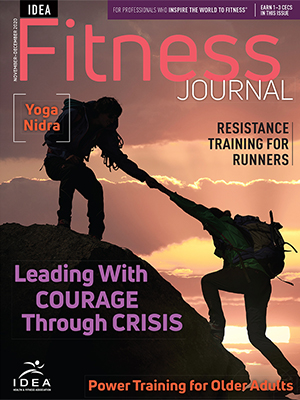
Concerned about your place in the new fitness industry? We have 40 years of experience supporting pros just like you! Let’s create a new wellness paradigm together—IDEAfit+is the extra edge you need. Once you team up with IDEA, be sure to take full advantage of all thebenefits of membership.



